Jean-Michel Basquiat (1960-1988) was a pioneer of the Neo-Expressionism movement and one of the most prominent artists of the 1980’s. A commonality amongst the artists of the period were bold, almost crudely-drawn letters strung together into thought-provoking phrases. Basquiat gave life to these letters, treating them with an importance equal to the drawings and sketches of the paintings.
The “Basquiat: The Unknown Notebooks” exhibition, now on display at Atlanta’s High Museum of Art through May, encapsulates the importance of language and words in his works. With a majority of the pieces on display coming from Basquiat’s personal notebooks, the exhibit emanates a feel that is both intimate and insightful. Many of the subjects that the works surround are ones that are still relevant, such as racism and pop culture. Though the artist’s career and life, as a whole, was short-lived (with Basquiat dying in 1988 at age 27 of a heroin overdose); his art had a lasting impact and continues to inspire today.
Jean-Michel Basquiat: Notebook, 1980-1981. This is the notebook that contained a majority of the pages that are on display at the exhibition. In the notebook, Basquiat transcribed some of his most intimate and raw thoughts.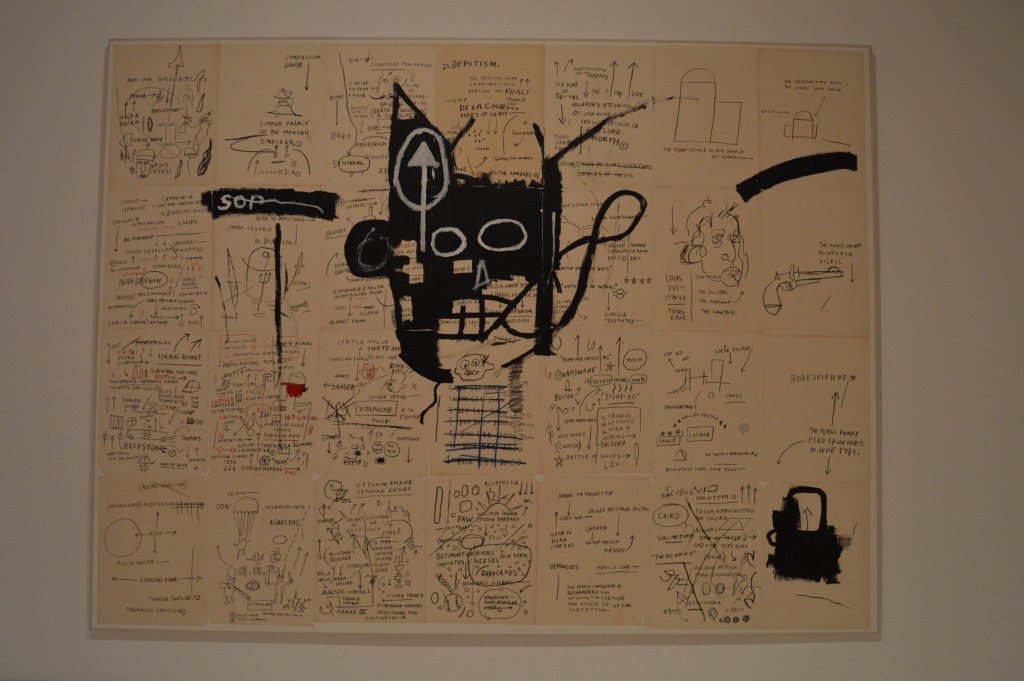
Jean-Michel Basquiat. This piece is one of the largest in the exhibition and contains the artist’s common cryptic letters, complete with lines and suggestive sketches. 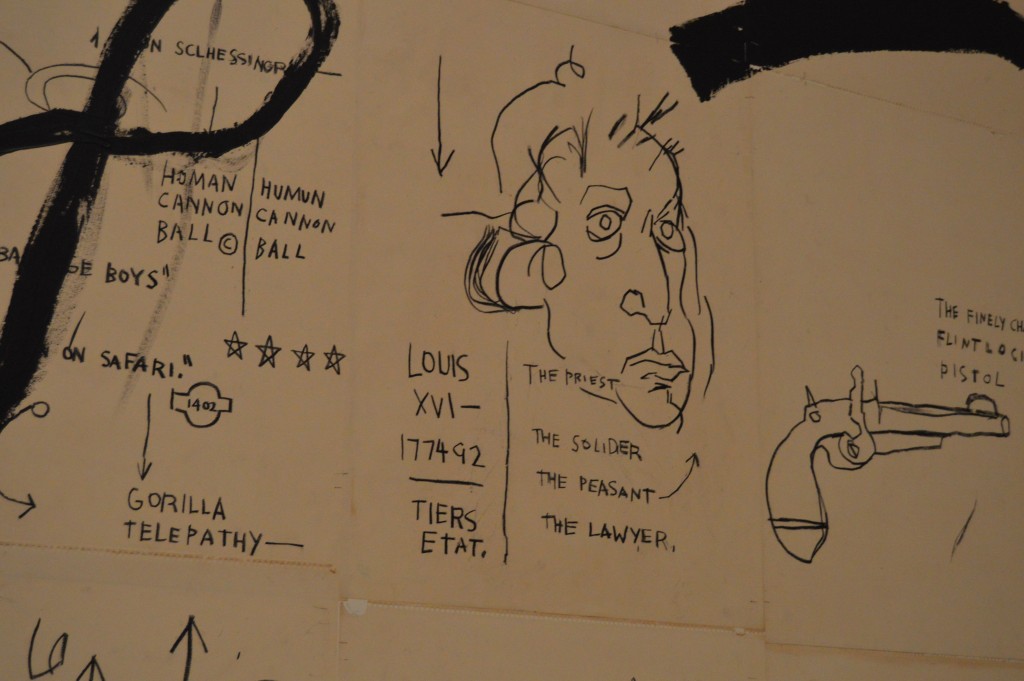
Jean-Michel Basquiat. Details from the previous painting, in which phrases such as “human canonball” and “gorilla telepathy,” accompanied by drawings phallic guns and portraits of unnamed persons.
Jean-Michel Basquiat: Untitled Notebook Page, 1980-1981. The last line of this page is particularly intriguing as it mentions a group of people “courting an American Madonna” (most likely in reference to the pop star Madonna, who Jean-Michel knew personally and even dated). The term “Madonna” is usually used to describe a holy woman or the Virgin Mary herself and the lascivious nature of this poem is contradictory to that.
Jean-Michel Basquiat: Untitled Notebook Page, 1980-1981. Many of Basquiat’s pieces focused on the subjects of racism and poverty. As an artist that was both black and homeless for a time, Basquiat was sure to have been familiar with the two, especially the former.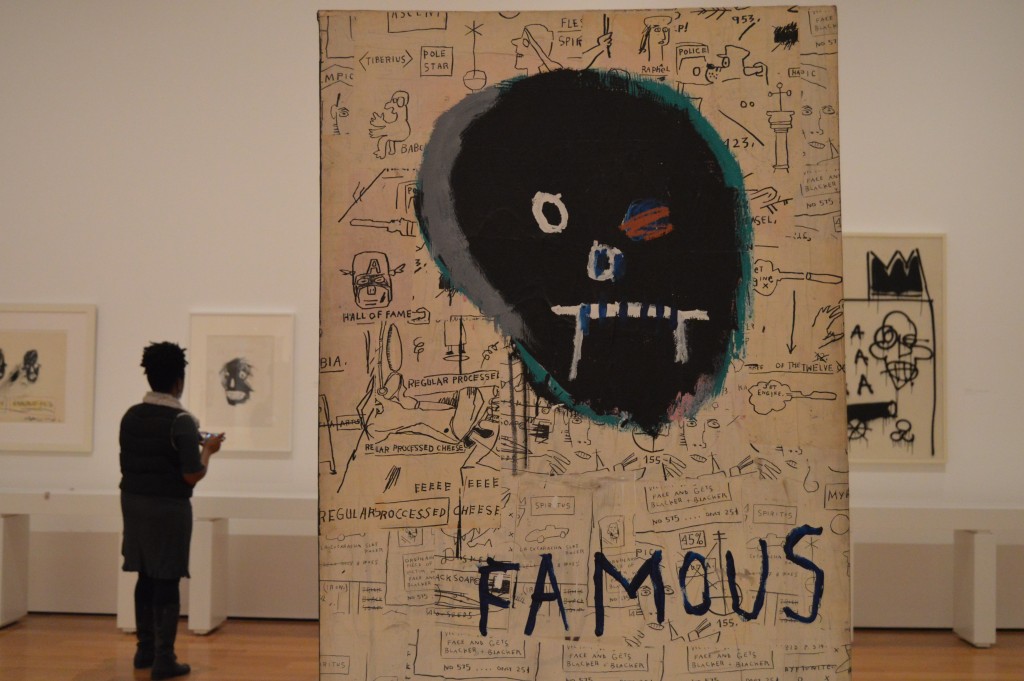
Jean-Michel Basquiat: Famous,1982. This upright painting is two-sided, with both sides covered in a collage of Xerox paper with Basquiat’s signature sketches, and then painted over. As is common in many of the his works, the main figure in this piece is a black person. Basquiat explained the purpose for the prevalent motif, saying: “The black person is the protagonist in most of my paintings. I realized that I didn’t see many paintings with black people in them.”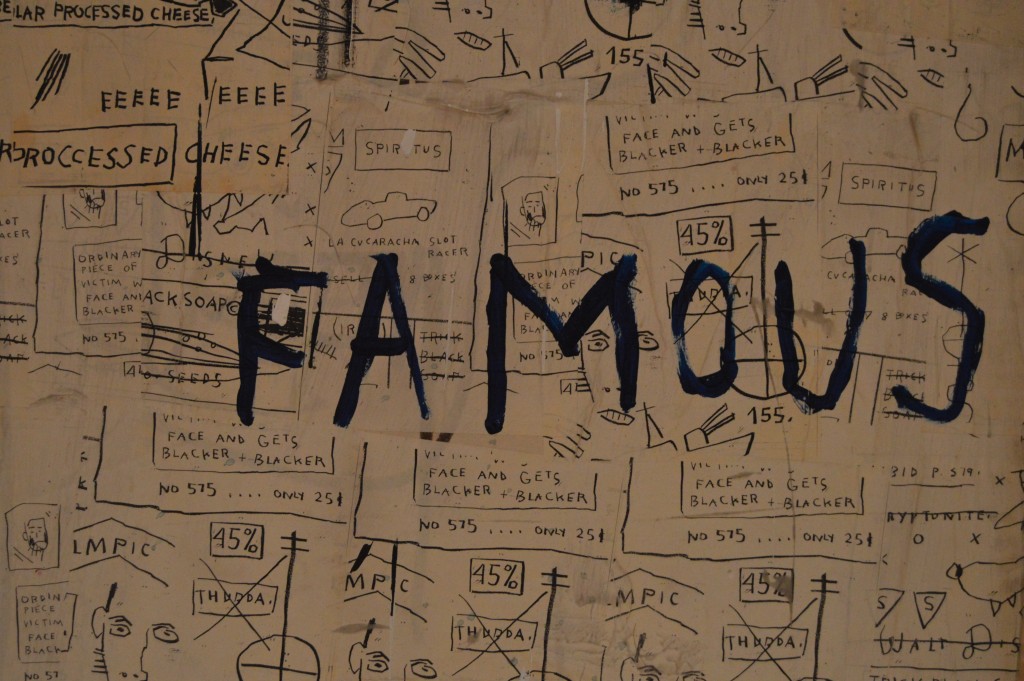
Jean-Michel Basquiat: Famous, 1982. A closer look of the previous painting reveals that the collage is of copies of the artist’s drawings. These specific drawings deal with pop culture, with phrases such as “olympic,” “processed cheese,” and “la cucaracha,” along with drawings of cars and comic book character Captain America.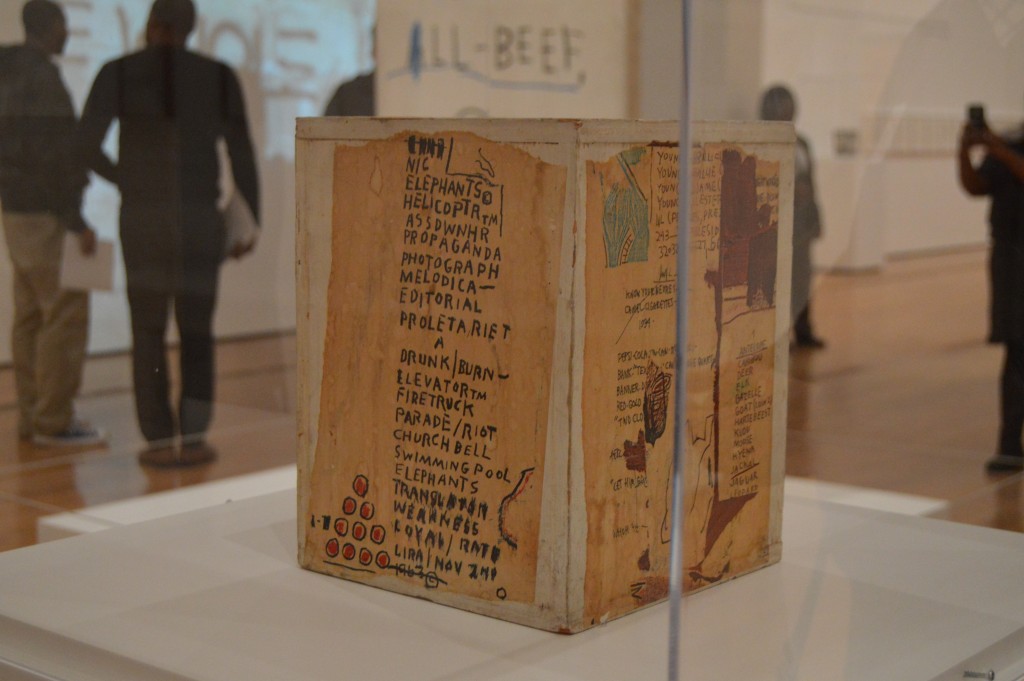
Jean-Michel Basquiat: Untitled, 1985. This piece consists of Xerox paper filled with enigmatic phrases and sketches glued to a wooden box. The box shape allows for a 3D work with poetic phrases plentifully strewn on all four sides.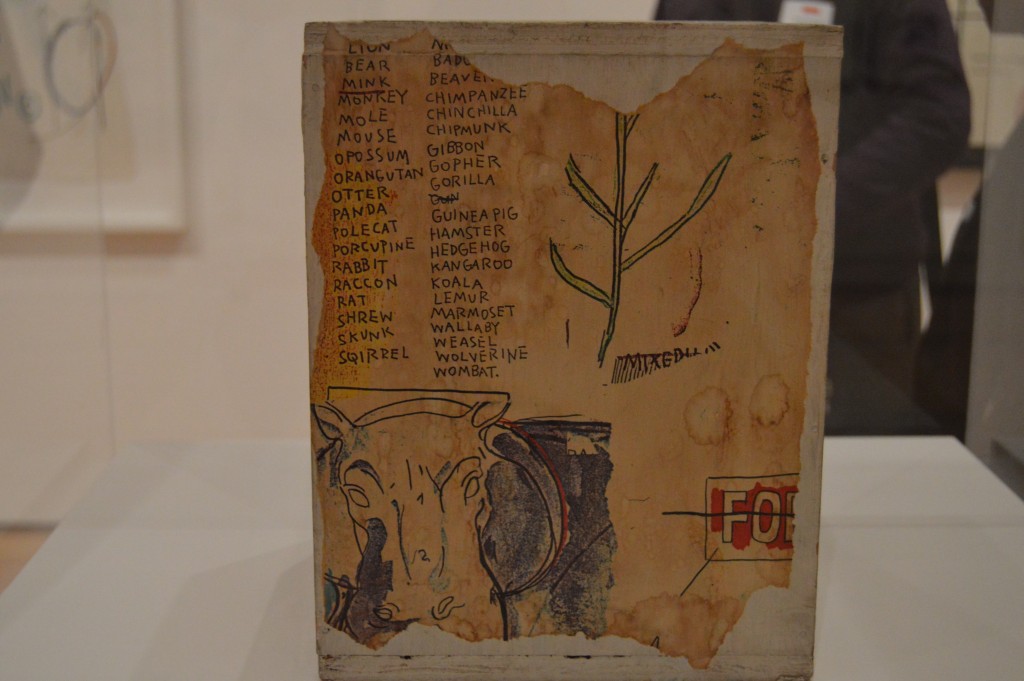
Jean-Michel Basquiat: Untitled, 1985. One of the sides of the piece that demonstrates the artist’s drawing skills. While most of Basquiat’s works included figures that feel effortlessly drawn and near-childlike (“I like kids’ work more than work by real artists any day,” he explained), he was capable of composing specific and detailed drawings, like the one of the hippo above.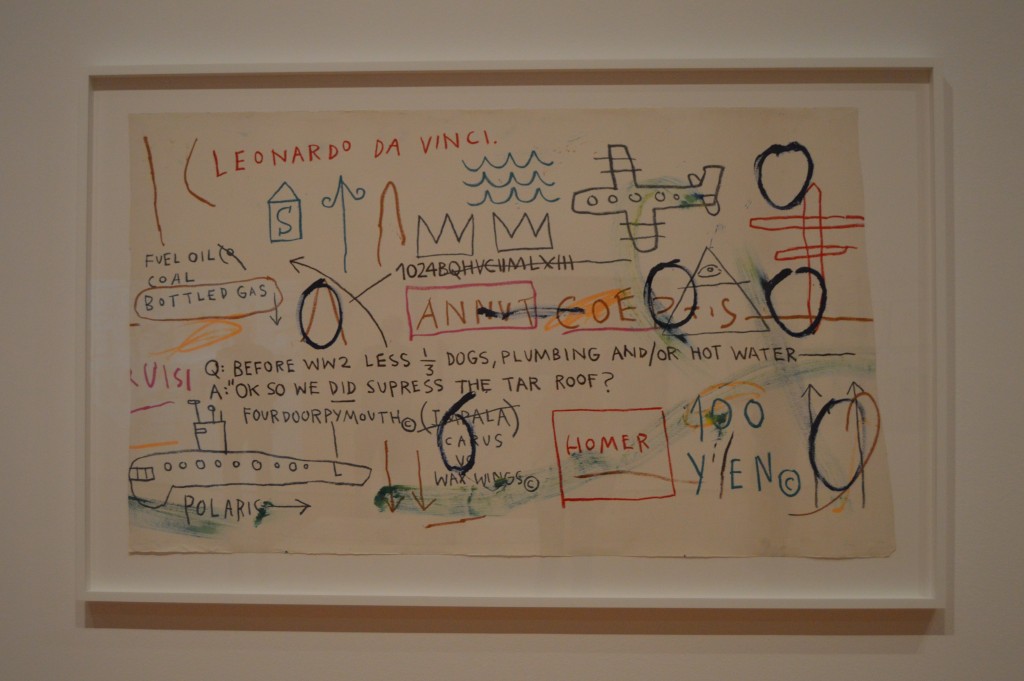
Jean-Michel Basquiat: Untitled (Leonardo Da Vinci), 1982. Despite some of the content of Basquiat’s works being rooted in pop culture, the artist also borrowed from history and other famous artworks. In this piece, there are names of famous figures written, such as Homer and Leonardo Da Vinci. 
Jean-Michel Basquiat: Untitled Notebook Page. This line from one of Basquiat’s notebooks is intriguing because of the two possible different interpretations of it. “Stopped in transit seven times” could refer to Basquiat’s prominence in the art community and growing fame and being recognized in public. Or it could refer to the Haitian and Puerto-Rican artist being a victim of frequent racial profiling by police. Or the line could altogether mean something entirely different. Art is subjective.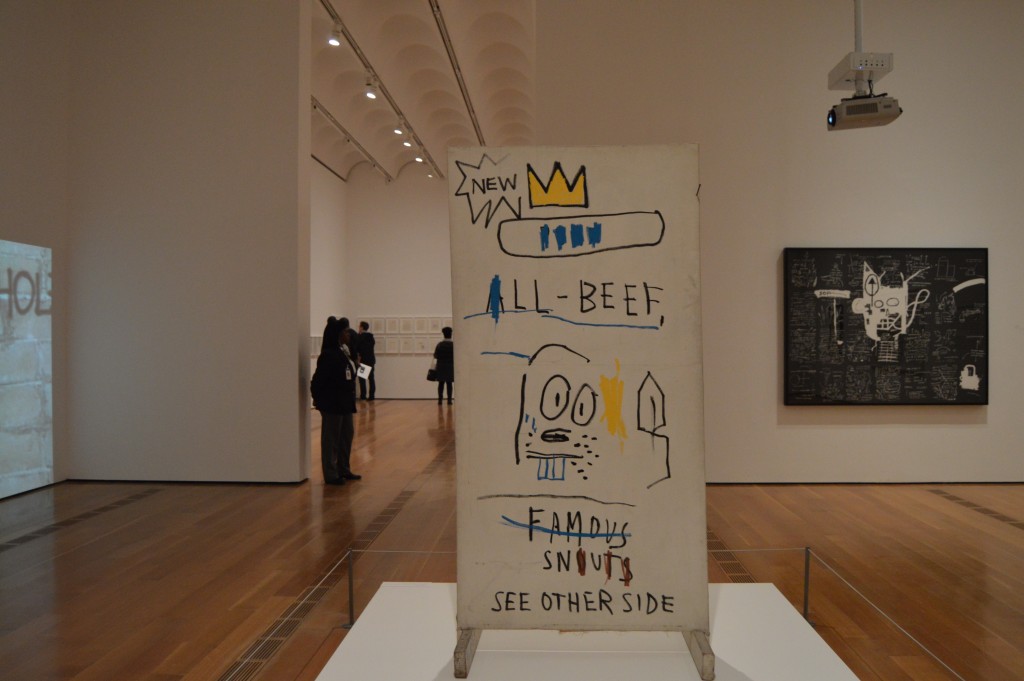
Jean-Michel Basquiat: All Beef, 1983. “All Beef” is one of Basquiat’s less-detailed works, with only several phrases and sketches. On this side of the double-sided piece, a seal with the phrase “famous snouts” below it and “all-beef” above is depicted. The artist’s familiar crown motif is also present here, accompanied by the word “new,” surrounded by an action bubble.
Jean-Michel Basquiat: All Beef, 1983. On this side of All Beef, Basquiat’s trademark strikethrough technique is observable. The artist has been quoted as saying, “I cross out words so you will see them more. The fact that they are obscured makes you want to read them.”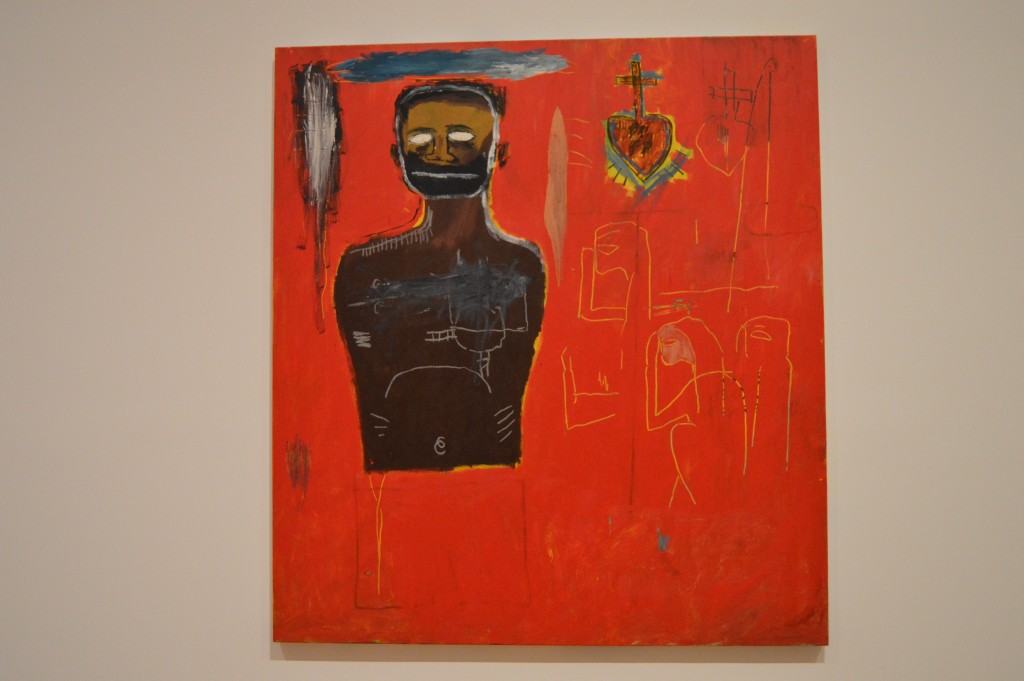
Jean-Michel Basquiat: Untitled (Cadmium), 1984. In Cadmium, another black man is the subject of the piece. Though Basquiat did not consider himself to be a black artist and has been recorded as saying, “I am not a black artist, I am an artist,” the visibility of black struggles and representation of black people in his work is seminal. The artist’s experience as a black person in the art world during a time when there was even less representation and diversity than there is now is ever-present in his work. As one of the most famous artists of the 1980s and even the 20th century, he contributed to the increased visibility of black people in art, even though he did not consider himself to be a black artist.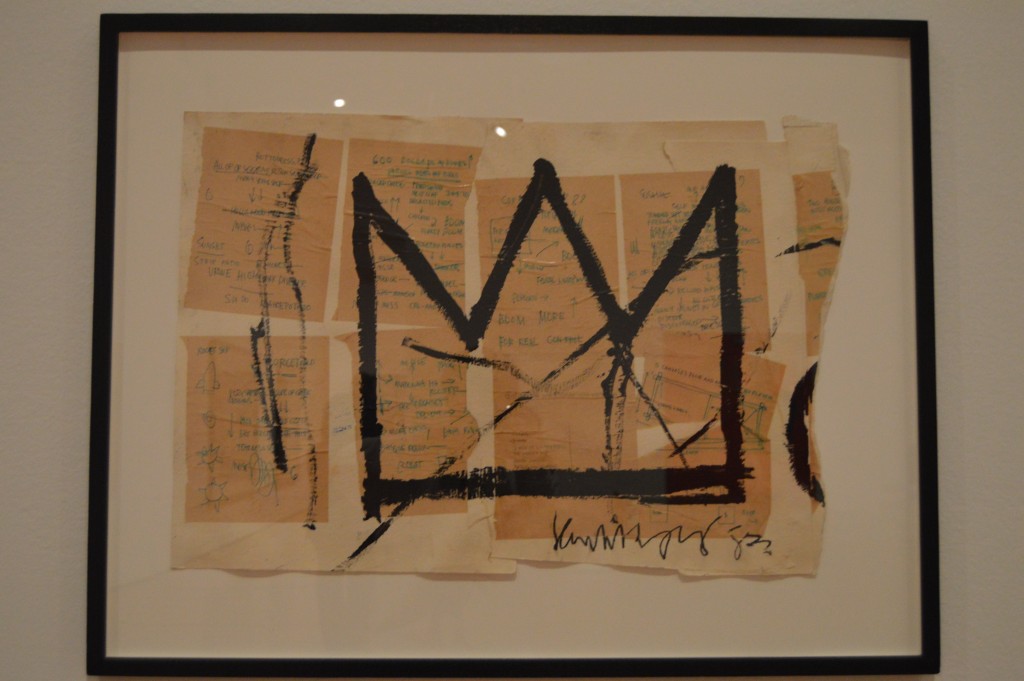
Jean-Michel Basquiat: Untitled (Crown), 1982. Basquiat’s famous crown motif, debatably his most popular symbol, is the focus of this picture. The artist’s use of the crown typically represented the strength and royalty-like status of black people. The motif most commonly appears on shirts other merchandise of the artist, but it has also become a sought-after tattoo. With celebrities such as “Orange is the New Black” actress Ruby Rose (who also has a portrait tattoo of Basquiat) and Saeed Jones, a Buzzfeed editor and poet baring their ink, it’s no surprise that the motif, and Basquiat as a result, are becoming mainstream.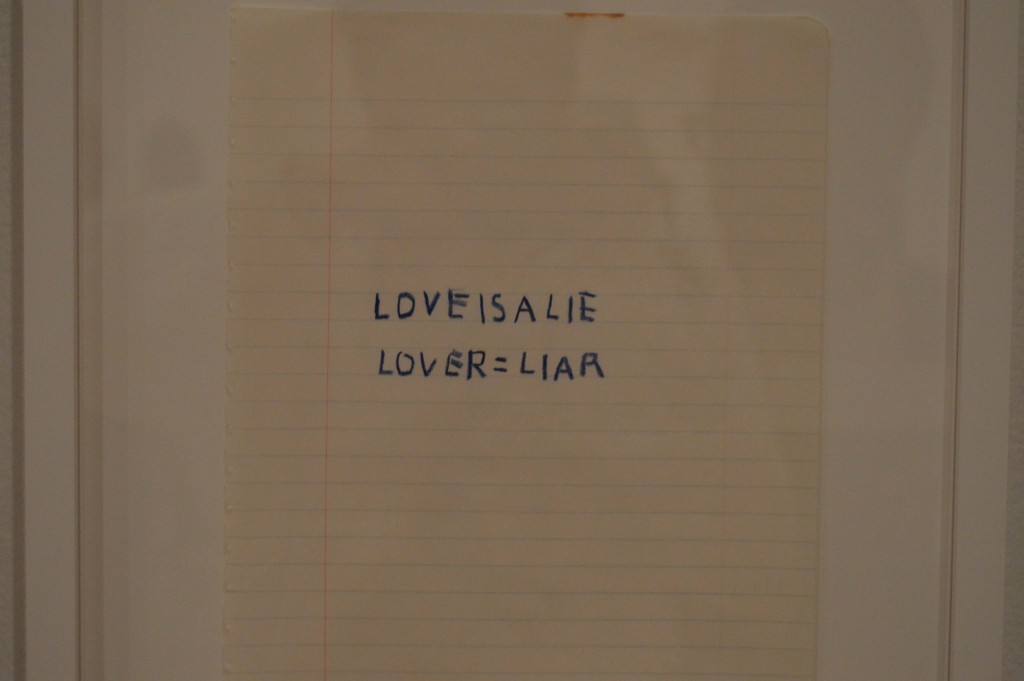
Jean-Michel Basquiat: Untitled Notebook Page, 1987. With a short but potent and heart-wrenching message, this particular page is a fan favorite. During the exhibition’s run at the Brooklyn Museum in New York, a photo of this piece posted to Tumblr amassed several hundred notes. 
Jean-Michel Basquiat: Three Arsonists (Potato Study), 1983. In this piece, Basquiat’s use and understanding of color is prominently displayed. The painting serves as a double entendre, on the surface appearing to be a simple painting of potatoes with peculiar faces, but also has a deeper meaning, as is indicated by the crossed-out “three arsonists.” The faces are actually those of three black individuals, most likely labelled arsonists as an indication of stereotyping, and then re-labelled potatoes to depict their ignorance (another stereotype).
Jean-Michel Basquiat: Catharsis, 1983. Catharsis is a large piece that contains three panels, each with the theme of anatomy. In all of the panels, hands are visible, accompanied by the name of body parts, in large letters, such as “throat,” “arm,” and “thumb.” The work is colorful in both its lettering and figures. 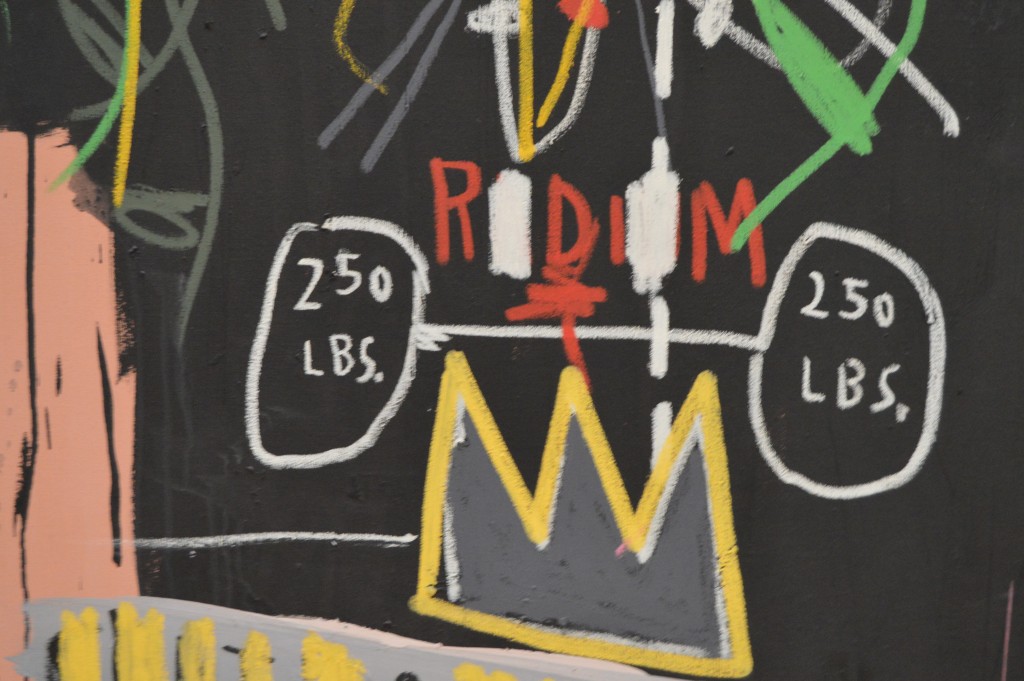
Jean-Michel Basquiat: Catharsis, 1983. Close Up of the sketch of 250-pound dumbbells, shown below.




